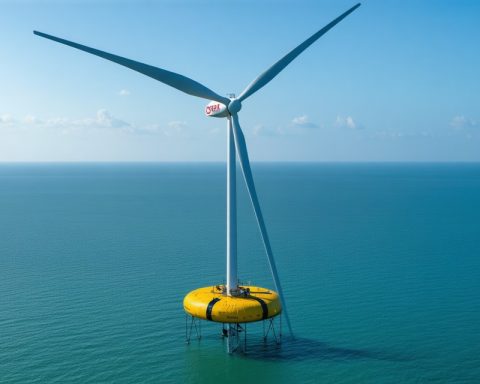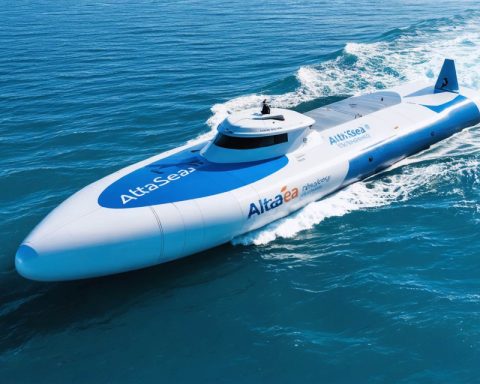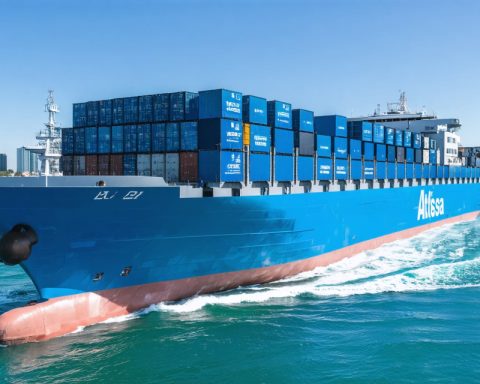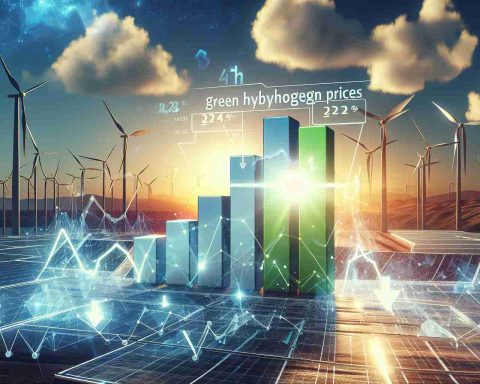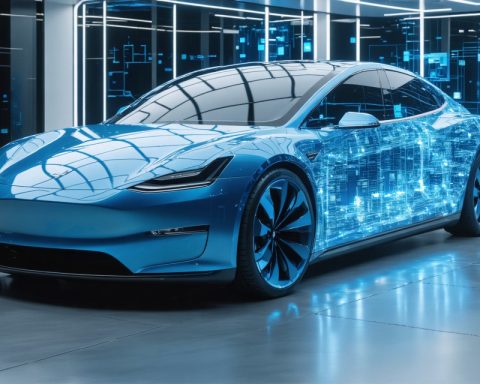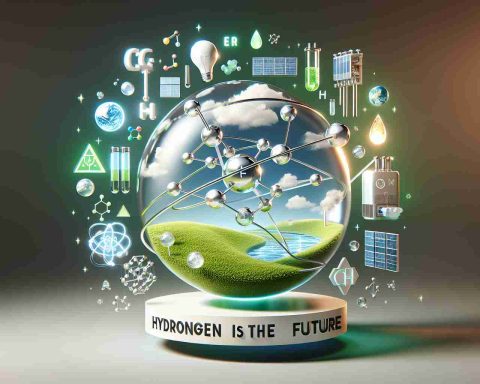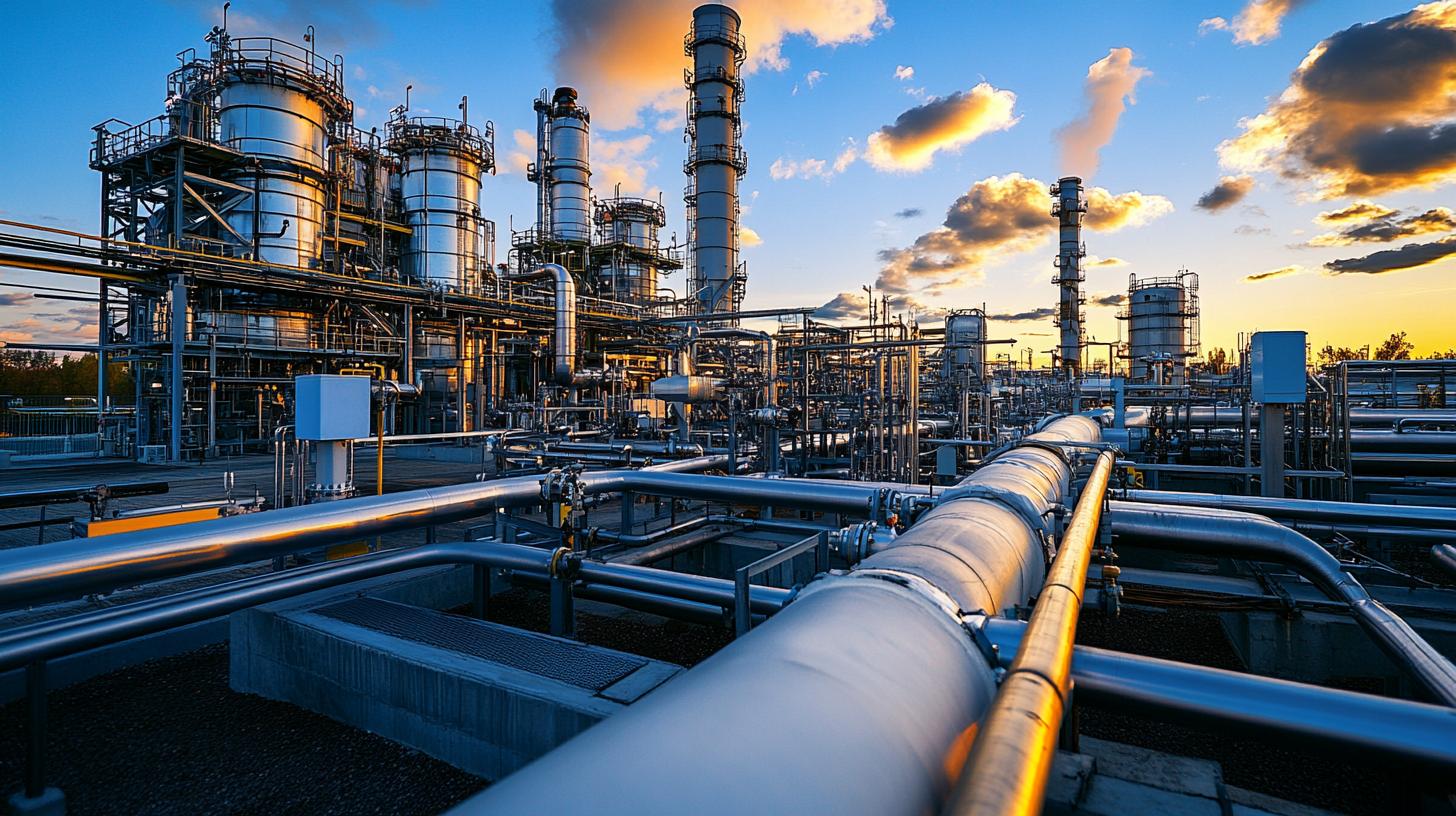- Air Products prioritizes major green projects in Saudi Arabia and Louisiana, advancing toward sustainable growth amid challenging regulations.
- The Neom project in Saudi Arabia is nearing 80% completion, while the Louisiana Clean Energy Complex targets a 2028 launch.
- Italy, with strong government support, pushes forward in hydrogen technology through Ansaldo Energia’s innovative Anion Exchange Membrane Electrolyser project.
- Eni transforms waste into significant quantities of circular methanol and hydrogen in northern Italy, enhancing sustainable chemical production.
- Iveco’s hydrogen-powered trucks redefine transportation between Nuremberg and Leipzig, emphasizing quick fueling and efficiency.
- Global initiatives in hydrogen technology and circular economy signal a shift towards a hydrogen-powered world, highlighting adaptability as key to future success.
Economic tides have reshaped the ambitions of major players in the energy sector, as seen in Air Products’ latest moves. Shimmering green visions in Saudi Arabia and Louisiana now eclipse plans on American soil, as the company strategizes for sustainable growth in a challenging regulatory landscape. Despite scrapping initiatives in California, New York, and Texas, Air Products charges confidently toward its monumental Neom green project, nearing a triumphant 80% completion. The Louisiana Clean Energy Complex also draws the firm’s keen focus, galloping toward its 2028 launch.
Across the Atlantic, Italy reignites the hydrogen landscape. Ansaldo Energia, buoyed by substantial government support, propels forward with a cutting-edge venture: crafting an Anion Exchange Membrane Electrolyser eclipse. This stride promises to imbue the nation’s energy pursuits with vibrant potential. By turning abundant ideas into action, Ansaldo secures its foothold in the future’s sustainable society.
In northern Italy, a symphony of waste conversion echoes through Eni’s latest collaboration. Here, ageless technology meets innovation, as vast quantities of unrecyclable waste metamorphose into 110,000 tons of circular methanol and 1,500 tons of circular hydrogen, promising to rewrite the narrative of chemical production.
On bustling European highways, Iveco’s hydrogen-powered trucks, poised with laser precision, navigate seamlessly between Nuremberg and Leipzig. With unmatched speed in fueling and enduring efficiency, these trucks redefine transportation in the heart of Europe.
These groundbreaking projects, blooming under the aegis of visionary technology and bold investment, signal a seismic shift toward a cleaner, hydrogen-powered world. The unmistakable message resonates: In a rapidly evolving landscape, adaptability is power. Embrace change and fuel the future.
Unveiling the Future: Energy Giants Shape a Hydrogen-Powered World
Real-World Use Cases of Hydrogen Energy
Air Products and the Neom Green Project:
The Neom project in Saudi Arabia is a flagship initiative aiming to establish a sustainable city powered by clean energy, primarily driven by hydrogen. Air Products is investing in developing green hydrogen infrastructure to support this vision. Applications include transportation fuel, industrial energy, and export globally. The move away from U.S.-based projects showcases a heavier reliance on areas with abundant renewable resources and supportive governmental policies.
Ansaldo Energia’s Electrolyser Advancement:
Italy is taking a significant step with Ansaldo Energia at the forefront of developing an Anion Exchange Membrane Electrolyser. This technology is crucial for clean hydrogen production, lowering costs, and increasing efficiency compared to traditional electrolyzers. The focus is on integrating hydrogen into national energy frameworks, supporting sectors like transportation and industrial manufacturing.
Eni’s Waste-to-Chemical Conversion:
The conversion of waste materials into circular methanol and hydrogen is an innovative solution addressing both waste management and energy needs. This process potentially offers a sustainable pathway for urban areas to reduce landfill waste while generating useful chemical products.
Iveco’s Hydrogen-Powered Trucks:
In Europe, Iveco’s trucks demonstrate the viability of hydrogen as a clean fuel for logistics and transportation. These vehicles maintain performance akin to diesel engines but with an eco-friendly edge, critical for reducing the carbon footprint of freight transport on busy highways.
How-To Steps & Life Hacks for Adapting Hydrogen Energy
1. Infrastructure Development: Focus on developing multi-purpose fueling stations that cater to different types of hydrogen vehicles. Governments and private sectors should collaborate on funding and research.
2. Policy Advocacy: Engage with policymakers to create hydrogen-friendly regulations and incentives. Highlight successful international projects like Neom as blueprints for local initiatives.
3. Public-Private Partnerships: Encourage collaborations between industrial players and governments to invest in pilot programs and research initiatives.
4. Community Education: Launch campaigns to inform the public on the benefits of hydrogen energy to gain societal support and acceptance.
Market Forecasts & Industry Trends
Global Hydrogen Market:
The global hydrogen market is predicted to grow at a CAGR of over 8% from 2022 to 2030, driven by increasing applications in transport and energy sectors, as noted by research firm MarketsandMarkets. The Middle East and Asia-Pacific regions are leading in new investments, while Europe is pushing regulatory advancements to integrate hydrogen.
Features, Specs & Pricing
Hydrogen Fuel Cell Vehicles:
Hydrogen fuel cells are praised for their efficiency and sustainability compared to combustion engines. Popular models, such as the Toyota Mirai, showcase impressive ranges of over 400 miles per fueling, suitable for both consumer use and freight transport. Prices are currently higher than traditional vehicles, reflecting the nascent stage of technology but are expected to decrease as adoption increases.
Security & Sustainability
Hydrogen safety has greatly improved; its non-toxic nature is a key advantage over fossil fuels. However, storage and transportation challenges, such as pressurization, must be efficiently managed. High investment in safety protocols is crucial to bolster public confidence and integrate hydrogen energy effectively.
Controversies & Limitations
The transition to hydrogen energy faces hurdles, such as high initial costs and potential environmental impacts of producing hydrogen through non-renewable methods. Enhanced research into green hydrogen production methods is essential to mitigate these concerns.
Actionable Recommendations
– Adopt Electrolyzers: Encourage industries to invest in technology like the Anion Exchange Membrane Electrolyser for enhanced hydrogen production.
– Explore Public Transportation Shifts: Cities should consider hydrogen-powered buses and trains to reduce urban pollution.
– Invest in Research and Development: Continued funding for green hydrogen projects is crucial for overcoming current technological and economic barriers.
For further information and updates on energy sectors, visit Air Products and Iveco.
By embracing hydrogen, industries worldwide can reduce carbon footprints while enhancing energy security and efficiency, capturing the potential of this clean energy era.



